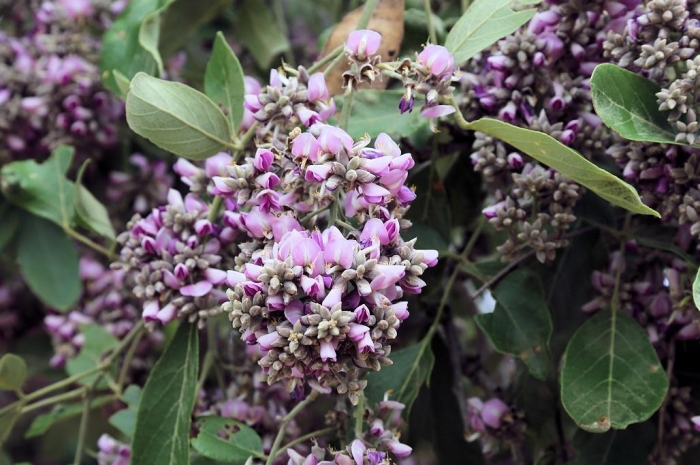Apple Leaf
(Philenoptera violacea)
Apple Leaf (Philenoptera violacea)
/
/

Wynand Uys
CC BY 4.0
Image By:
Wynand Uys
Recorded By:
Copyright:
CC BY 4.0
Copyright Notice:
Photo by: Wynand Uys | License Type: CC BY 4.0 | License URL: http://creativecommons.org/licenses/by/4.0/ | Rights Holder: Wynand Uys | Publisher: iNaturalist | Date Created: 41928 |

























Estimated Native Range
Summary
Philenoptera violacea, commonly known as Apple Leaf or Rain Tree, is a deciduous tree native to various ecosystems in Tropical and Southern Africa, including riverine forests, floodplain grasslands, and plateau miombo woodlands. It is found at elevations up to 4,600 feet and is adapted to a range of soil types, including alluvium and Kalahari sands. Notably, it often grows on termite mounds, which may provide nutrients and improved soil conditions. Its distribution includes the Democratic Republic of Congo (DRC), Tanzania, Zambia, northeastern Namibia, Zimbabwe, South Africa, Eswatini, Botswana, and southeastern Angola. The tree is known for excreting water drops due to spittle bugs, which is the origin of its common name "Rain Tree." It was first collected by Johann Klotzsch in Mozambique in 1861 and was given its current name in 2000.
The Apple Leaf tree is recognized for its attractive foliage and the unique phenomenon of "rain" created by spittle bugs. It reaches a height of 15 to 20 meters, with a wide-spreading crown that provides dense shade. The leaves are a glossy green, and the tree produces clusters of purple-blue flowers that are quite showy when in bloom. The tree’s bark is smooth and gray, and it may produce a pod-like fruit. In cultivation, it is valued for its shade and ornamental flowers, making it suitable for large gardens, parks, and as a street tree in urban landscapes. It requires full sun to part shade and can tolerate a range of soil conditions, though it prefers well-drained soils. While it is generally low-maintenance, it may require additional water during prolonged dry periods.CC BY-SA 4.0
The Apple Leaf tree is recognized for its attractive foliage and the unique phenomenon of "rain" created by spittle bugs. It reaches a height of 15 to 20 meters, with a wide-spreading crown that provides dense shade. The leaves are a glossy green, and the tree produces clusters of purple-blue flowers that are quite showy when in bloom. The tree’s bark is smooth and gray, and it may produce a pod-like fruit. In cultivation, it is valued for its shade and ornamental flowers, making it suitable for large gardens, parks, and as a street tree in urban landscapes. It requires full sun to part shade and can tolerate a range of soil conditions, though it prefers well-drained soils. While it is generally low-maintenance, it may require additional water during prolonged dry periods.CC BY-SA 4.0
Plant Description
- Plant Type: Tree
- Height: 20-40 feet
- Width: 20-30 feet
- Growth Rate: Moderate
- Flower Color: White, Cream
- Flowering Season: Spring
- Leaf Retention: Deciduous
Growth Requirements
- Sun: Full Sun
- Water: Low
- Drainage: Medium, Fast
Common Uses
Bee Garden, Bird Garden, Border Plant, Butterfly Garden, Drought Tolerant, Edible*Disclaimer: Easyscape's listed plant edibility is for informational use. Always verify the safety and proper identification of any plant before consumption., Fragrant, Low Maintenance, Showy Flowers
Natural Habitat
native to various ecosystems in Tropical and Southern Africa, including riverine forests, floodplain grasslands, and plateau miombo woodlands
Other Names
Common Names: Purple pod cluster-leaf, Rain tree
Scientific Names: , Philenoptera violacea, Capassa violacea, Derris violacea, Lonchocarpus violaceus,
GBIF Accepted Name: